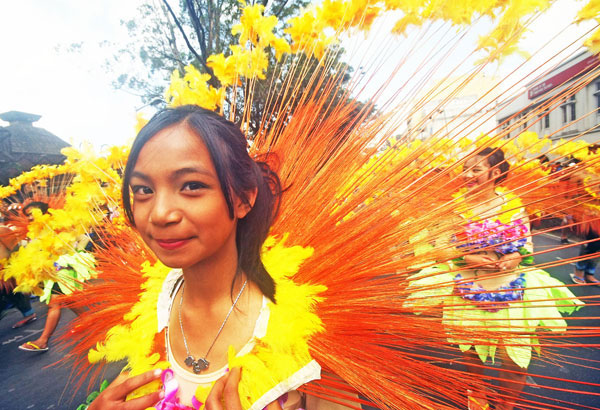Baguio is first Philippine city in UNESCO Creative Cities Network
November 2, 2017 | 12:31am

A flower-clad street dancer in Baguio City's Panagbenga Festival. Artemio A. Dumlao, file
BAGUIO CITY, Philippines — Baguio City, known as the country's summer capital, is the first city in the Philippines chosen as one of 64 cities that UNESCO has included in the Creative Cities Network.
The Creative Cities Network was created in 2004 and is "a global initiative to improve urban living standards by developing industries based on innovation and creativity" and "to promote cooperation with and among cities that have identified creativity as a strategic factor for sustainable urban development," the UN agency said on its website.
It uses the framework of the United Nations 2030 Agenda for Sustainable Development, which sets international priorities for economic, social and environmental development.
"These new designations showcase an enhanced diversity in city profiles and geographical balance," said UNESCO Director General Irina Bokova.
The UNESCO Creative Cities Network, formed by 116 members from 54 countries, aims to:
- strengthen international cooperation between cities
- strengthen the creation, production, distribution and dissemination of cultural activities, goods and services
- develop hubs of creativity and innovation
- fully integrate culture and creativity into local development strategies and plans
The network covers seven creative fields: Crafts and Folk Arts, Media Arts, Film, Design, Gastronomy, Literature and Music.
Baguio City made it under the Crafts and Folk Arts category and was short-listed in September.
Being a popular holiday destination for its chilly mountain climate and still abundant pine trees, Baguio City is also recognized for its artistry, with the likes of Ben Cabrera and Kidlat Tahimik (Eric de Guia), among the distinguished members of the famed Baguio Arts Guild.
It is also known for promoting Cordilleran woven art through Igorot hand weaving icon Narda Capuyan, who had kept the indigenous hand weaving tradition alive by training young women in creating handwoven products.
Notable handicraft items, which are often sold as souvenir items, include hand weaving, wood carving and metalcraft.
BrandSpace Articles
<
>
Philstar
- Latest
- Trending
Trending
Latest
Trending
Latest
Recommended
























